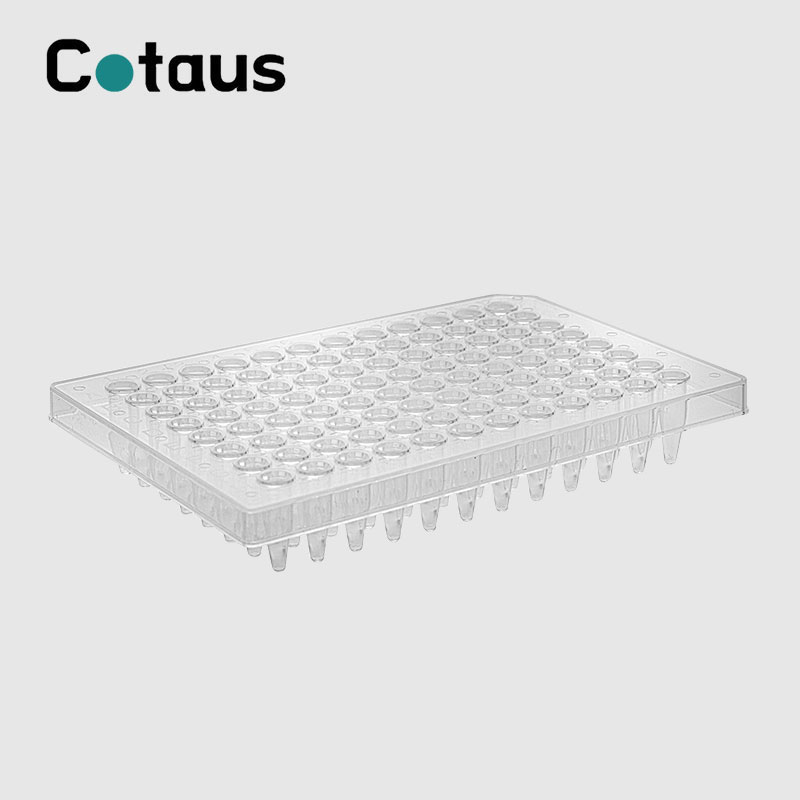Safeguarding PCR Integrity: Strategies to Prevent Sample Evaporation and Contamination in Transparent Half-Skirt PCR Plates
2024-03-22
In the realm of molecular biology research, the accuracy and reliability of PCR (Polymerase Chain Reaction) experiments hinge on maintaining the integrity of samples throughout the amplification process. Transparent half-skirt PCR plates have gained popularity for their enhanced sample visibility and ease of manipulation. However, their design also presents unique challenges, such as the increased risk of sample evaporation and contamination due to the exposed well surfaces. In this blog, we'll explore common strategies employed to prevent sample evaporation or contamination in transparent half-skirt PCR plates, ensuring the integrity of PCR results.
1. Sealing Films:
One of the most effective strategies to prevent sample evaporation and contamination in transparent half-skirt PCR plates is the use of sealing films. These adhesive films adhere tightly to the surface of the PCR plate, forming a barrier that seals each well and prevents the escape of samples. Sealing films are available in various formats, including individual sheets and pre-cut strips, to accommodate different plate formats and sealing requirements. When applying sealing films, it's essential to ensure proper alignment and uniform application to achieve a consistent seal across all wells.
2. Heat Seals:
Heat sealing is another commonly employed method to prevent sample evaporation and contamination in transparent half-skirt PCR plates. Heat seals utilize a heat source to melt a thin layer of sealing film onto the PCR plate, creating a secure barrier that encapsulates each well. This method offers a more robust and reliable seal compared to adhesive films, particularly for high-throughput applications where sealing consistency is critical. However, heat sealing requires specialized equipment and may not be suitable for all laboratories.
3. Cap Strips:
Cap strips provide a physical barrier to prevent sample evaporation and contamination in transparent half-skirt PCR plates. These individual caps snap securely onto each well, forming a tight seal that protects samples from external contaminants. Cap strips are convenient to use and can be easily applied and removed manually or with automated cap-pipetting systems. However, researchers should ensure proper seating of cap strips to prevent leaks or sample loss during handling.
4. Silicone Sealing Mats:
Silicone sealing mats are flexible mats designed to fit securely over the entire surface of transparent half-skirt PCR plates, creating a tight seal that covers all wells simultaneously. These mats are reusable and can be easily removed and repositioned as needed. Silicone sealing mats provide a cost-effective and environmentally friendly alternative to single-use sealing films or cap strips, making them ideal for laboratories with high sample throughput.
5. Humidification Systems:
In environments with low humidity levels, sample evaporation from transparent half-skirt PCR plates may be exacerbated. To counteract this effect, humidification systems can be employed to maintain optimal humidity levels within the PCR workstation or incubator. These systems utilize water reservoirs or humidification chambers to generate a humid environment that reduces the rate of sample evaporation and ensures the stability of PCR reactions.
Conclusion:
Preventing sample evaporation and contamination is essential for maintaining the integrity of PCR experiments conducted in transparent half-skirt PCR plates. By employing strategies such as sealing films, heat seals, cap strips, silicone sealing mats, and humidification systems, researchers can safeguard their samples and ensure reliable PCR results. Whether performing basic research, diagnostic testing, or high-throughput screening, these strategies play a crucial role in preserving sample integrity and advancing scientific discovery in the field of molecular biology.



